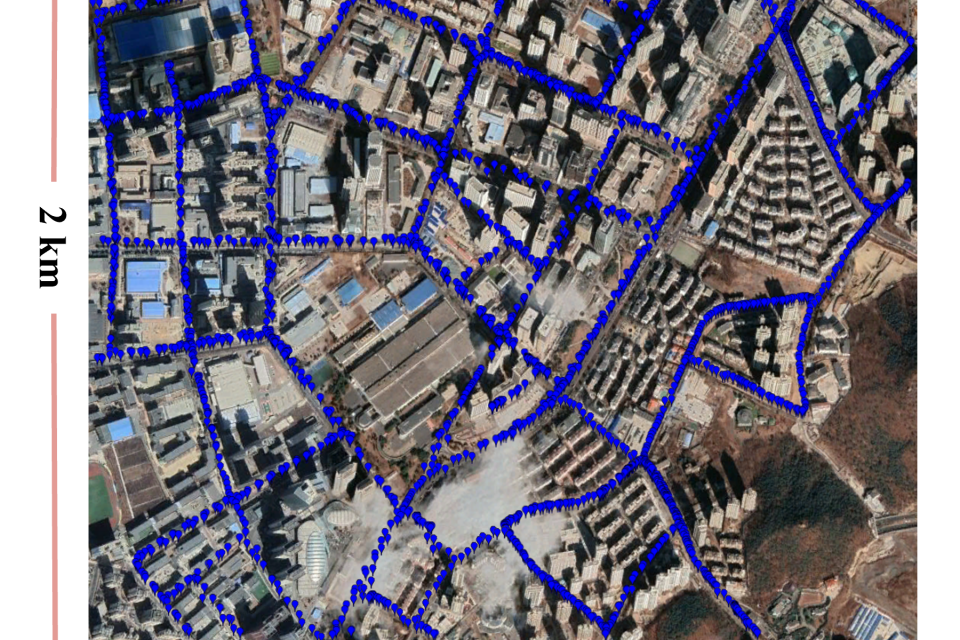Datasets
Standard Dataset
Cellular Network Fingerprint Localization Dataset
- Citation Author(s):
- Submitted by:
- Xinzhe Liu
- Last updated:
- Sun, 10/20/2024 - 22:35
- DOI:
- 10.21227/g28x-3t85
- License:
 354 Views
354 Views- Categories:
- Keywords:
Abstract
The dataset was collected in the actual outdoor environment of Dalian, China, with specific areas carefully selected to encompass a diverse range of environmental characteristics. These environments are extensive, including not only the urban center with high-rise office buildings and high population density but also suburban areas with scattered low-rise buildings and relative tranquility; additionally, they encompass major urban arteries with constant traffic flow and urban side streets with lighter traffic.
Within a specific time frame, we systematically collected wireless fingerprint information from the aforementioned selected areas. The real-time data obtained from a single measurement is comprehensive, specifically including: (1) precise location parameters of the positioning device; (2) detailed network parameters of the current serving cell (i.e., the network base station connected to the device); and (3) network parameters of all neighboring cells (i.e., other potential connectable network base stations in the vicinity) detectable by the device.
During the fingerprint data collection process, we employed a dynamic tracking method, where the collection device was mounted on a moving vehicle traveling at normal driving speeds, with fingerprint data recorded every 100 milliseconds. This high-frequency continuous collection strategy enabled us to efficiently gather continuous and dense fingerprint information along the streets.
Cellular network sensors enable real-time measurement of data required for fingerprint localization through AT commands.
The real-time data of a single measurement includes:
1. location parameters of the device.
2. network parameters from the cell served by the device.
3. network parameters from all neighboring cells to which the device is connected.
In the case of LTE mode:
1、Measuring device real-time position parameters have the following format:
AT+QGPSLOC=0
+QGPSLOC: 123415.0,3851.3714N,12131.0460E,0.6,46.0,2,137.07,0.0,0.0,241022,08
OK
3851.3714N, latitude
12131.0460E, longitude
2、Measuring network parameters from a serving cell has the following format:
AT+QENG="servingcell"
+QENG:"servingcell",<state>,"LTE",<is_tdd>,<mcc>,<mnc>,<cellid>,<pcid>,<earfcn>,<freq_band_ind>,<ul_bandwidth>,<dl _bandwidth>,<tac>,<rsrp>,<rsrq>,<rssi>,<sinr>,<srxlev>.
OK
Example:
AT+QENG="servingcell"
+QENG: "servingcell","NOCONN","LTE","FDD",460,01,122E503,74,1650,3,5,5,B03,-68,-10,-37,14,53
OK
3、Measuring network parameters from neighboring cells has the following format:
AT+QENG="neighbourcell"
+QENG:
"neighbourcell intra","LTE",<earfcn>,<pcid>,<rsrq>,<rsrp>,<rssi>,<sinr> ,<srxlev>,<cell_resel_priority>,
<s_non_intra_search>,<thresh_serving_low>,<s_intra_search>
OK
Example:
AT+QENG="neighbourcell"
+QENG: "neighbourcell intra","LTE",1650,74,-6,-68,-41,-20,53,6,20,2,60 (neighboring cell 1)
+QENG: "neighbourcell inter","LTE",50,-,-,-,-,-,-,0,8,7 (neighboring cell 2)
+QENG: "neighbourcell inter","LTE",325,-,-,-,-,-,-,0,8,6 (neighboring cell 3)
OK
Terms and Abbreviations :
<state>, String format. UE state.
"SEARCH”, UE is searching but could not (yet) find a suitable 2G/3G/4G cell.
"LIMSRV”, UE is camping on a cell but has not registered on the network.
"NOCONN", UE is camping on a cell and has registered on the network, and it is in idle mode.
"CONNECT", UE is camping on a cell and has registered on the network, and a call is in progress.
<is_tdd>, TDD or FDD mode.
<mcc>, Number format. Mobile country code (first part of the PLMN code)
<mnc>, Number format. Mobile network code (second part of the PLMN code)
<cellid>, Hexadecimal format. Cell ID. The parameter determines the 16-bit (GSM) or 28-bit (UMTS) cell ID. Range: 0-0xFFFFFFF.
<pcid>, Physical cell ID
<earfcn>, Number format. E-UTRA-ARFCN of the cell that was scanned.
<freq_band_ind>, E-UTRA frequency band (see 3GPP 36.101).
<ul_bandwidth>, Number format. UL bandwidth
<dl_bandwidth>, Number format. DL bandwidth.
<tac>, Tracking area code (see 3GPP 23.003 Chapter 19.4.2.3).
<rsrp>, Reference signal received power (see 3GPP 36.214 Chapter 5.1.1).
<rsrq>, Reference signal received quality (see 3GPP 36.214 Chapter 5.1.2).
<rssi>, Number format. Received signal strength indication.
<sinr>, Number format. Logarithmic value of SINR, and the values are only the first 1/5 part of the dB value. Range: 0-250, which translates to -20dB - +30dB.
<srxlev>, Number format. Select RX level value for base station in dB (see 3GPP 25.304).
<cell_resel_priority>, Cell reselection priority. Range: 0-7.
<s_non_intra_search>, Threshold to control non-intra-frequency searches.
<thresh_serving_low>, The threshold of <srxlev> (in dB) used by the UE on the serving cells when reselecting towards a lower priority RAT/frequency.
<s_intra_search>, Cell selection parameter for the intra-frequency cell.
Documentation
| Attachment | Size |
|---|---|
| 145.03 KB |






